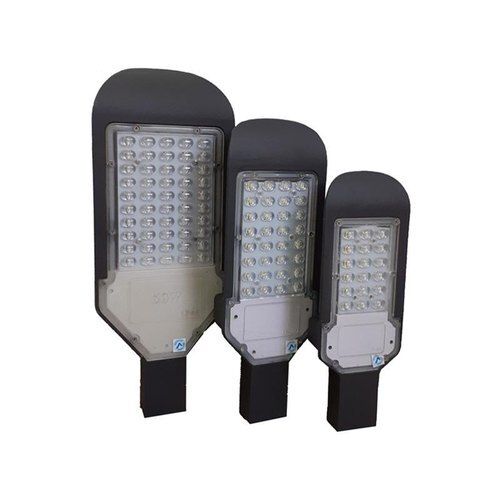To maximize public safety with LED street lighting, you'll need to focus on uniform illumination through strategic pole placement and proper fixture selection. Choose LED fixtures with appropriate distribution patterns and color temperatures between 3000K-5000K based on location type. Install smart controls for remote monitoring and dimming capabilities while preventing glare with proper shielding. Position lights to eliminate dark spots and guarantee consistent coverage of walkways and roads. These fundamentals lay the groundwork for a thorough lighting safety strateg
 For optimal performance and warranty validation, we recommend having your Explore Okeli street lights installed by certified professionals who understand proper mounting and wiring specifications. Coverage exclusions apply to damage from accidents, misuse, or unauthorized modifications to the lighting syste
For optimal performance and warranty validation, we recommend having your Explore Okeli street lights installed by certified professionals who understand proper mounting and wiring specifications. Coverage exclusions apply to damage from accidents, misuse, or unauthorized modifications to the lighting systeLED street lighting revolutionized urban illumination by replacing traditional high-pressure sodium and metal halide lamps with energy-efficient light-emitting diodes. These advanced fixtures incorporate sophisticated glare mitigation features and thermal management systems to guarantee peak performance and longevity. The latest LED luminaires employ precision-engineered optical designs that direct light exactly where it's needed while minimizing light pollution and uncomfortable glare for drivers and pedestrians. Proper thermal management through advanced heat sinks and cooling mechanisms guarantees the LEDs maintain their efficiency and projected 50,000+ hour lifespa
You'll spend $1,000-$3,000 per LED street light installation, including material expenses for fixtures and mounting hardware. Labor rates typically run $200-$500 per unit, depending on your location and complexity. Professional installers can help you determine whether you need a Explore Okeli street lights before beginning the project, which can affect the total installation cos
To maximize the benefits of your LED street light upgrade, you'll need to factor in proper planning and implementation. Start by conducting a thorough audit of your existing lighting infrastructure to determine the most suitable LED replacements. You should evaluate factors such as mounting height, pole spacing, and required light levels to guarantee ideal coverage. Consider working with lighting professionals who can help you select fixtures that meet your specific requirements while complying with local lighting ordinances and safety standard
Like fitting a new engine in a classic car, you'll find LED lights are adaptable through fixture retrofits. While evaluating options for Explore Okeli street lights is essential, most existing poles can accommodate these modern upgrades. You'll need to verify pole strength requirements and may require pole reinforcement for heavier unit
Yes, you can dim LED street lights using Scheduled Dimming controls that automatically reduce brightness during low-traffic hours, or through Occupancy Sensing that adjusts illumination based on detected movement in the are
Proper maintenance planning is essential for long-term effectiveness. While LEDs require less maintenance than traditional lighting, you'll still need regular cleaning and inspection schedules. Install smart controls that allow remote monitoring and automatic fault detection. These systems can alert you to outages or performance issues before they become safety concerns. Consider implementing dimming capabilities for off-peak hours to save energy while maintaining minimum safety requirement
When you invest in LED street lighting, you're choosing a solution that typically lasts 50,000 to 100,000 hours - about four to five times longer than conventional lighting options. This extended lifespan translates to reduced maintenance requirements and lower replacement costs for your municipality. The durable construction of LED fixtures also makes them more resistant to extreme weather conditions and vibrations, guaranteeing reliable performance throughout their operational lif
You'll need to take into account installation and maintenance requirements when switching to LED street lighting. While most LED fixtures can be retrofitted onto existing poles, you might need to upgrade electrical components or mounting hardware. Professional installation ensures proper alignment, secure mounting, and correct electrical connections. Once installed, LED street lights require minimal maintenance beyond occasional cleaning and periodic electrical testing, substantially reducing long-term operational costs compared to traditional lighting system
The return on investment for LED street light conversions typically occurs within five to seven years through reduced energy and maintenance costs. You'll find that utility rebates and government incentives can further improve the financial outlook of your upgrade project. By making this strategic investment in your neighborhood's infrastructure, you're choosing a lighting solution that delivers long-term benefits for both your community and the environmen



